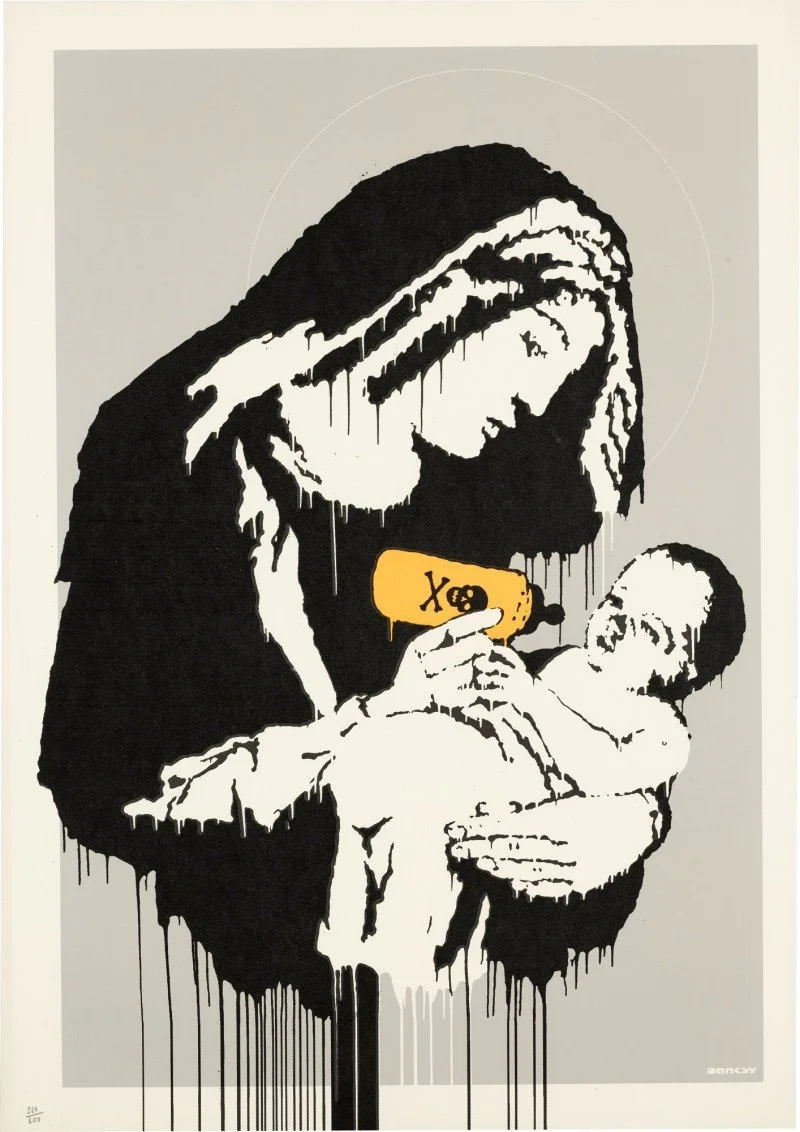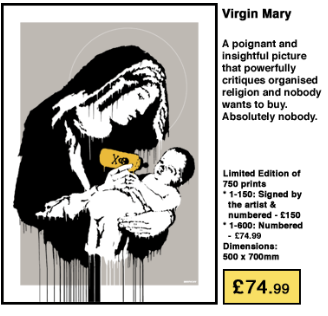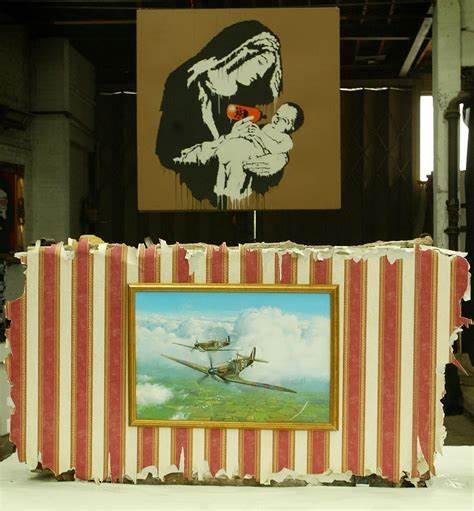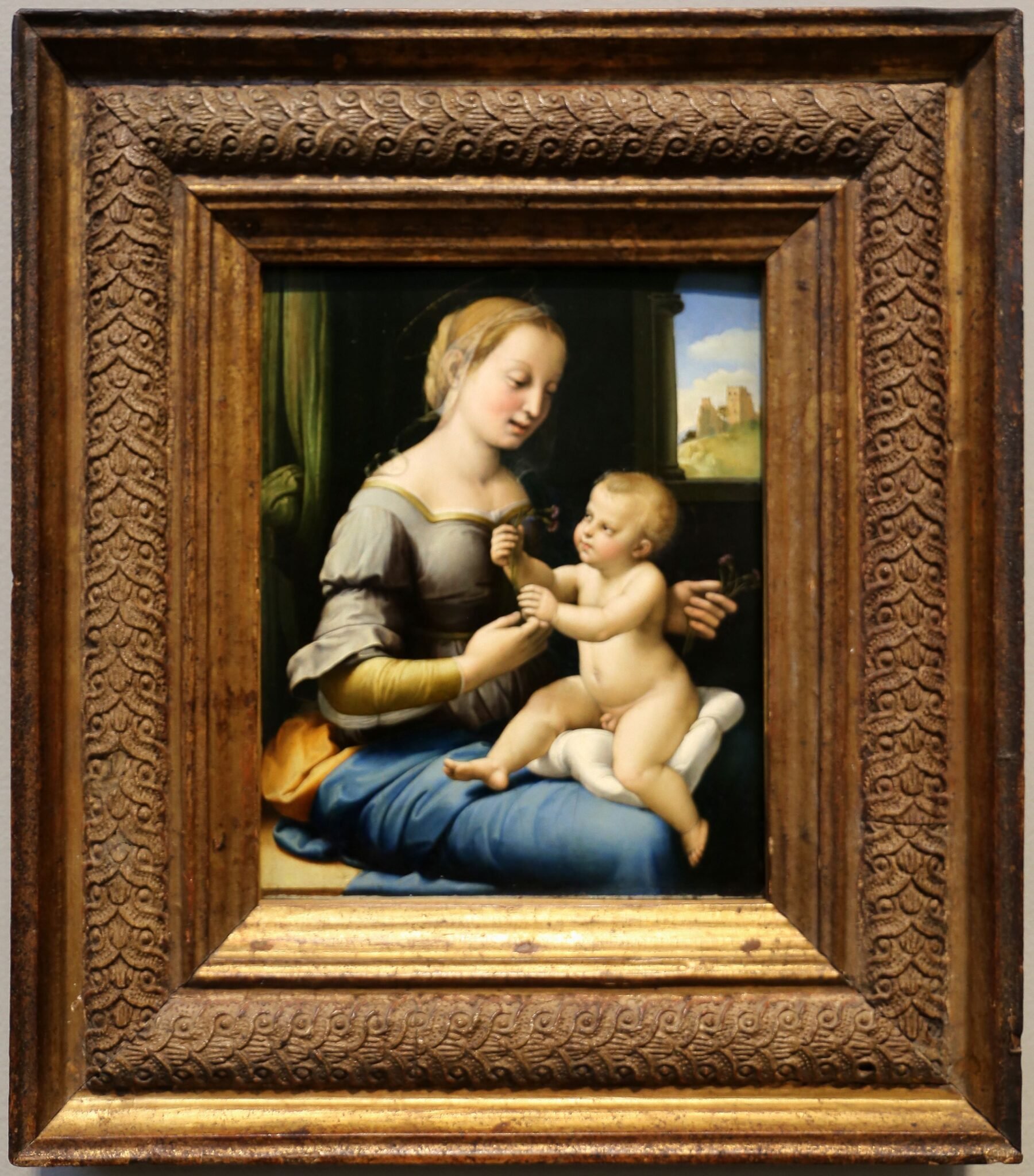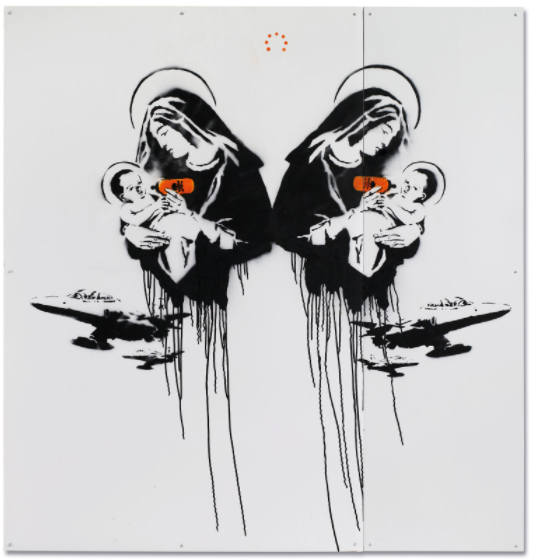Art Deep Dive: Toxic Mary
Toxic Mary, 2003
Editions: 150 signed, 600 unsigned
“A poignant and insightful picture that powerfully critiques organized religion,
and no-one wants to buy. Absolutely nobody.”
Toxic Mary portrays Virgin Mary, cloaked in drapery, feeding her infant, in the style of a classic Renaissance painting. However, in this version, her baby is fed with a bottle marked with a skull and crossbones as if it were poison. Unlike Banksy’s usual clean style, paint drips are running across the image, just as if the scene was melting before our eyes, evoking a sense of despair.
“Some mothers will do anything for their children, except let them be themselves.”
Banksy, Cut It Out, December 2004
Banksy portrays religion as a toxic ideology passed from parents to children. More widely, the artist comments on the general toxicity of family relationships, in which outdated ideas and traditions repeat themselves. It may well also illustrate how our societies promote Big Pharma baby formula over natural breast milk. Indeed, as it is always the case with Banksy, there are a few different readings to his art. The label on the milk bottle clearly targets pharmaceutical companies that produce formula milk for babies. The mother willingly uses what she thinks is best for her baby, because she has been assured this is the right thing to do…
Toxic Mary, initially entitled Virgin Mary was released at a price of GBP 150 for a signed print, and GBP 74.99 for an unsigned print. Toxic Mary first appeared at Turf War, Banksy’s exhibit in London in 2003.
Unique colorways were made available at the 2007 Santa’s Ghetto, in Palestine, and were sold only to buyers who attended for a price of $10,000.
The figure of the Madonna is one of the most easily recognizable, most frequently produced images in the history of art. The word Madonna is derived from the Italian ‘ma donna,’ or ‘my lady’ and is used to describe Mary, the mother of Christ. The most well-known examples of The Madonna and Child were completed by Italian painter Raphael, who moved from his native Urbino to Florence at the turn of the 16th century. Over the course of his career, the artist created more than 30 paintings of The Madonna and Child, for devotional panels and commercial sales, as well as gifts for friends, including one wedding present. His representations are considered among the most reverential and graceful of Mary and Jesus.
Raphael, Madonna and Child, c. 1506-1507
Oil on yew wood, 27.9 x 22.4 cm
The National Gallery, London
Banksy also created a few originals based on this provoking visual:
Toxic Mary, 2002
Spray-paint on two panels on canvas
180×188 cm (74 x 70 3/4 inches)
Christie’s London, 12 February 2020
GBP 455,250
Toxic Mary (Double), 2003
Enamel and emulsion on cardboard
200.4 x 170.2 cm (79×67 inches)
Christie’s London, 26 June 2019
GBP 419,250
Words and Images from ‘Banksy Explained’: www.banksyexplained.com/toxic-mary
A Limited Edition screen-print of Toxic Mary (2003) is currently Available for purchase through Smart Gallery.
Numbered edition 494 of 600 unsigned, sold with Pest Control Certificate issued 14/11/2020. Recently re-framed, the picture is in excellent condition.
If you are interested in viewing this unique collector’s piece, please contact Jess at Smart Gallery by email (sales@smartgallery.co.uk) to arrange an appointment for a private viewing.

